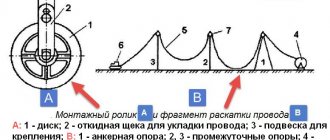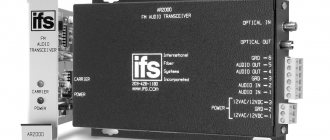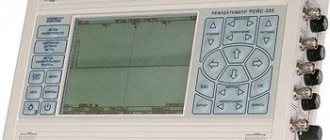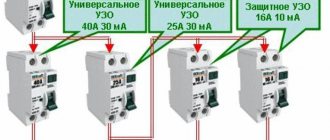SIP telephony is a method of voice communication over the Internet based on the SIP protocol. Thanks to it, the devices used by subscribers for calls “understand” each other and correctly transmit data based on the principle of alternating requests and responses. The range of applications of this protocol is quite wide: cloud telephony, audio and video conferencing, online games.
In this article we will tell you what sip telephony is, for dummies and not only.
Differences between SIP and IP protocols
Modern IP telephony is often called SIP telephony (and in a large number of cases this is not a mistake). But many people wonder: is there any difference between these concepts at all? The fact is that SIP, although the most popular today, is not the only IP protocol. Consequently, only that communication method that is based on this protocol is called sip telephony.
Many are also perplexed why 3 terms are used at once to refer to the same phenomenon - SIP telephony, IP telephony and VoIP. Let us examine in more detail the essence of these concepts.
Let's start with the technology as a whole - Internet Protocol (IP) communications. He united all computer networks into a network that we call the “Internet”. To exchange information, each device has an original IP address.
Voice transmission technology is referred to by the abbreviation VoIP (literally “voice over IP”). It is responsible for exchanging any audio data, this includes broadcasting podcasts, webinars, calls over the Internet, viewing recordings from modern CCTV cameras that transmit not only images, but also sound.
IP telephony is the technology of telephony over the Internet, that is, it is a specific type of VoIP, which refers exclusively to audio and video communication over the Internet. The communication principle is based on the IP protocol. In turn, as we said above, calls over SIP protocols (and, therefore, SIP telephony) are a type of IP telephony. In addition to SIP, there are a number of other IP protocols: H.323, MGCP, etc.
Conditions for high-quality communication via UIS SIP telephony are Internet speeds of at least 128 Kbps.
SIP wire design:
SIP – 1, SIP – 2, TU 16.K71-268-98
SIP – 1A, SIP – 2A, TU 16.K71-268-98
SIP – 3, TU 16.K71-268-98
SIP – 4, SIP – 5, TU 16.K71-272-98, TT
The phase conductor is made of aluminum, it is stranded and compacted. The zero support core is made of ABE aluminum alloy or steel-aluminum alloy, it is also stranded and compacted. The insulation is made of light-stabilized thermoplastic polyethylene (LDPE) for wires SIP-1, SIP-1A, SIP-4, and for wires SIP-2 light-stabilized cross-linked polyethylene (XLPE), SIP-2A, SIP-3, and SIP-5.
How SIP telephony works
Let's talk a little more about the principle of operation. What happens when a user makes a call from a device with a SIP client installed to a company that operates IP telephony.
- A special codec turns the human voice into a digital signal. By the way, a serious advantage of modern telephony is already evident here: this method of data transfer speeds up communications and reduces the load on the network.
- The signal is transmitted to the device with which the subscriber is working “at the other end of the line.”
- The caller's device and the recipient's device identify each other by IP address and begin a connection via SIP.
- The signal is decrypted, and the subscriber who picks up hears human speech.
Scope of application of SIP wires
Self-supporting insulated wires (SIP) are intended for use in overhead power lines (power lines) suspended on supports or facades of buildings and structures.
Climatic modification - UHL, placement categories - 1, 2 and 3, in atmospheres of type II and III according to GOST 15150-69.
Self-supporting insulated wires revealed a technical and economic advantage of the lines compared to overhead power lines with a voltage of 0.38 kV with bare wires.
Based on the positive experience of using self-supporting insulated wires, the RAO UES of Russia directive document No. OB-5145 dated June 26, 2000 “On the use of self-supporting insulated wires in construction and reconstruction” was published.
Making and receiving calls
When the user dials the desired number, the call is sent via the Internet to the server of the cloud telephony operator. It is then automatically routed to the number the user is calling. Such a call can be directed not only to a SIP number, but also to a regular, landline or mobile one, it depends on the method of organizing communication on the other side.
You can receive and make calls via SIP using the following equipment:
- a modern VoIP phone (with a wired handset or portable radio handset) directly connected to the Internet;
- an analog telephone connected to an IP gateway, in turn connected to the Internet;
- PC or laptop, if it has a calling application (SIP client) installed and the Internet is working;
- SIP application on a mobile phone if there is Wi-Fi or mobile Internet.
The UIS provider has an extensive catalog of cutting-edge business telephony equipment, including a VoIP phone and gateway to choose from. If you wish, you can download the UIS softphone for free to work from a computer/laptop or a mobile application.
Conditions for mounting on supports
Rolling continues until the beginning of the wire, connected to the leader cable, passes the rolling roller on the last support. At the next stage, the SIP is attached. The supporting core or the entire bundle, depending on the type of wire used, must be secured in an anchor clamp, leaving the ends of sufficient length to make connections. Then the SIP is disconnected from the leader cable. The unrolling roller is removed. Next, it is necessary to pull the cable through the eyes of the supporting clamps on all intermediate supports and remove the mounting rollers.
How is SIP attached to poles?
Forwarding
It is difficult to find a company that does not need a variety of call forwarding schemes. This is required by the specifics of the employees’ work schedule, the structure of the department, and the distribution of responsibilities. IP telephony will allow you to forward calls in cases where the employee to whom the call is directed is busy or absent from the workplace.
For example, if an employee has left the office, the call will be redirected to his mobile or home phone. If an employee is unable to answer, the call is automatically forwarded to a colleague. When a customer calls after hours, they may be greeted with a voice message stating that the company is currently closed. There are many other situations. Having different call processing options will allow you not to lose incoming calls and prevent potential clients from leaving for competitors.
It is also possible to configure various call distribution scenarios, including through an interactive voice menu. In the latter case, the client will be greeted by a virtual secretary at the very beginning, thanks to which the call will quickly reach exactly the specialist that the caller needs. It may be that there is no need to involve an employee in communication at all - the client calls to find out information that will be communicated to him automatically (for example, the status of the order).
Electrical characteristics of SIP wires
wire SIP 1 SIP 2 electrical characteristics"> wire SIP3 electrical characteristics"> wire SIP4 electrical characteristics"> wire SIP5 electrical characteristics"> wire SIP5 mechanical characteristics">
Integration with business services
UIS SIP telephony can be integrated with any third-party IT system, be it a CRM, ERP system, or others, which allows you to automate the work of the sales department (and any other “telephone” department). One-button integrations with amoCRM, Bitrix24 and RetailCRM are very popular. A special compact widget has been developed for amoCRM, which allows you to process calls without closing the CRM window and takes up very little space on the screen. Integration also makes it possible to automate outgoing calls within amoCRM, conveniently transfer calls to colleagues, and much more.
In addition to the main CRM, UIS has ready-made integrations with more than 30 systems, including industry ones. Their list can be viewed here. If your company does not use a universal CRM, but a highly specialized one, pay attention to this list - perhaps you will find yours in it. Any integration makes it possible to enjoy the basic benefits of the solution:
- storing and listening to recordings of conversations in CRM;
- opening a card in CRM with information about the client upon an incoming call.
And if your employees work in a unique, self-written CRM, thanks to the open API, you can integrate it with UIS telephony.
Recently, one client told us how, thanks to integration with the Telegram messenger, he views notifications on his wristwatch about all the calls that come into his call center. The UIS API allows you to combine telephony with many different IT services, even with a smart home system (there are companies where this is useful).
Do you want to connect UIS telephony?
Installation errors
Before installing the wire, you need to familiarize yourself with the most common mistakes made by inexperienced installers:
- Poor fixation of supports in the ground.
- Incorrect choice of clamp size, which causes the wire to dangle or the lock of the clamp to not close.
- Reusing clips. All fastening units of the SIP system are disposable, but this is often forgotten. The use of old and incorrect clamps is very difficult to detect at the stage of line construction. Problems begin to appear already during operation.
- Wires not fully clamped. Novice installers are afraid of breaking the clamping devices and do not tighten them completely.
- Excessively weak or strong tension. The error occurs due to the lack of tables and a dynamometer, as well as the inability to use them.
- Rolling out SIP on the ground.
- Incorrect entry of the wire into the room or switchboard, causing damage to the insulation.
- Missing mounting brackets.
- Wire touching the roofs of premises due to calculation errors.
- Using fasteners from different types of SIP wires.
- Lack of markings on the supports (serial number, width of the security zone, contact telephone number of the line owner).
What safety measures must be observed when performing work?
Underground method from a pillar
Connecting the input underground is more important, since the wire is protected from the negative influence of atmospheric phenomena, fire and accidental breakage. Underground installation occurs in the following order:
- The input cable is lowered from the pole into a trench dug towards the house. The minimum depth of the trench is 80 cm. The area under the road is deepened to 1 m.
- In a trench, SIP is placed in a metal or plastic sleeve. The same sleeve should come out of the ground up a column, at least 2 m high;
- When backfilling a trench, signal beacons are installed on the surface to warn of the passage of a cable.
The cable entry into the house is made under the foundation through a sleeve or raised along the wall if the distribution board is located on the street.
Benefits of technology
Let's present the main advantages of SIP telephony in the form of a list:
- Low prices for long-distance calls and calls abroad - this is the cheapest way to communicate;
- Suitable for home and office use;
- Fast connection without contracts or SIM cards;
- Access to communication services anywhere in the world without roaming;
- Provides quick movement from place to place;
- Easy connection of virtual numbers from any city;
- High-quality voice transmission (depending on the provider);
- Video calling support – communicate with friends, relatives and colleagues via a webcam.
SIP telephony is a full-fledged replacement for a landline telephone and an inexpensive addition to a cell phone.











